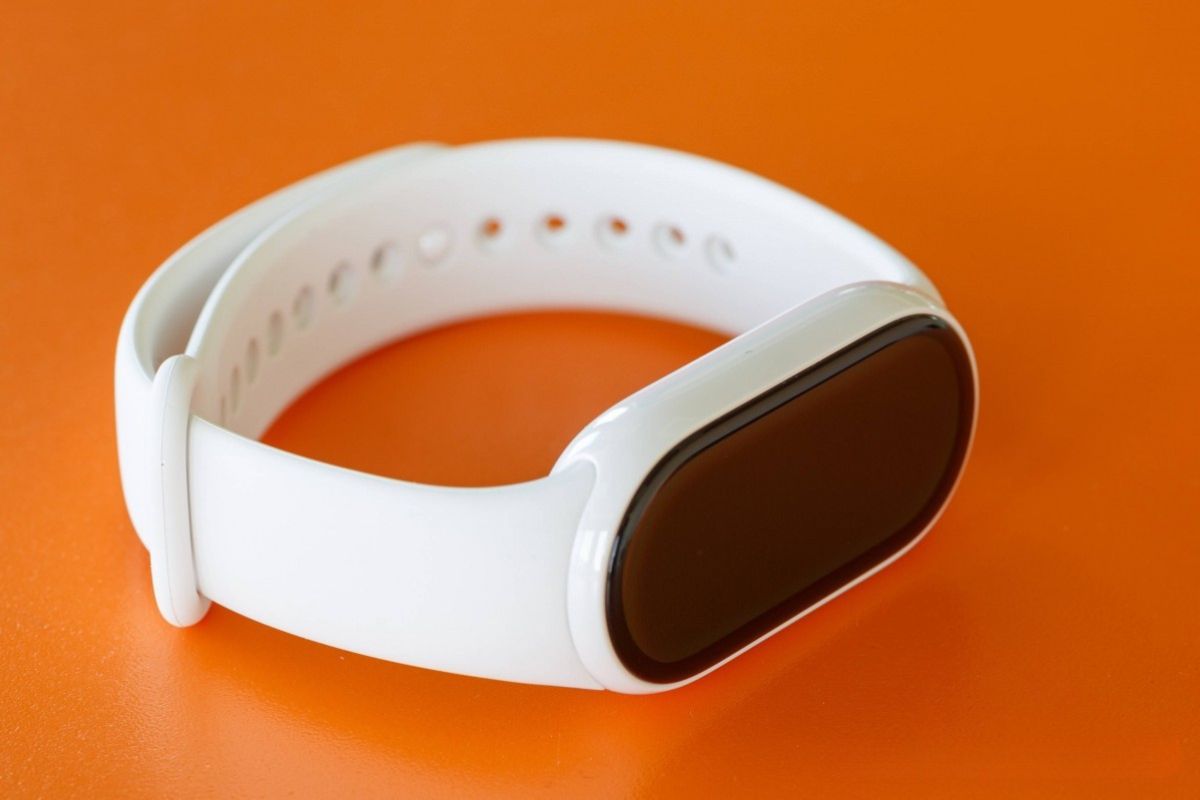Xiaomi Smart Band 10
The tenth generation of Xiaomi Smart Band 10 series has been on the market for eleven years. Xiaomi’s ascent in the wearables market was sparked by the Mi Band, which has since managed to hold its place as one of the most affordable gadgets available.
Xiaomi attempted to improve its best-selling wearable with a few hardware changes and a slightly higher starting price after the Xiaomi Smart Band 10 became official.
The slightly bigger and brighter screen, along with promises of more precise activity and health tracking, are the primary additions to this year’s Band 10. Additionally, you’re getting a modernized vibration motor with the same fundamental design that hasn’t changed much since the Band 7 days. Is the increased asking price justified by the new additions?
Create
Xiaomi made minimal design changes to the Xiaomi Smart Band 10. The pebble-shaped puck with the long, narrow AMOLED display is still there. The screen diagonal of the new model is 1.72 inches, which is larger than the 1.62 inches of the previous model.

This time, the bezels are precisely symmetrical and thinner, measuring 2 mm on each side.
The updated maximum brightness is the other significant addition. Band 10 has increased its HBM brightness from 1,200 nits to 1,500 nits. Using the Band 10 outside on these bright summer days is made easier by this pleasant upgrade. Always-on display (AOD) and auto brightness, which we used during our review process, are still available for when you simply want to check the time.
The Ceramic Edition is our review unit. Although it is not the first ceramic Xiaomi Smart Band, it is the first to enter international markets. The bottom, which houses the sensors, is still made of plastic, but the side frame is composed of ceramic.
The sleek white design of the Ceramic Edition Band 10 evokes the look of Stormtrooper armor. It feels significantly heavier than previous Smart Bands, which is another obvious fact. With its fluorruber strap, our review unit weighs 44 grams, while it weighs 26 grams alone.
For comparison, the standard Band 10 with its metal shell should weigh about 16 grams without the strap. Band 10 feels slightly more upscale due to its ceramic finish, even with the additional weight.

We want to veer off topic because this reviewer has consistently found the absence of physical buttons on the previous four generations of Xiaomi Smart Bands to be annoying.
We will reiterate what we have already said: restore the physical buttons! Or perhaps a back button that is capacitive? The band can only be turned on by connecting it to the magnetic charger. You’re out of luck if you need to restart the band and you don’t have the charger with you.
We would urge Xiaomi to at least think about reintroducing buttons for the Smart Band 11 because we’re still not sure that the all-swipe gesture navigation model is the best option for a wearable, especially when your hands are wet.

A warranty leaflet, a quick start guide, and a proprietary two-pin magnetic charging cable are included in the box, as is customary with Xiaomi Smart Bands.
Additionally, Xiaomi released a new pearl-chain pendant that, if you’re into fashion, turns the Xiaomi Smart Band 10 into a piece of jewelry.
Qualities
Originally designed as low-cost activity trackers, smart bands have been gaining feature parity with smartwatches in recent years. However, compared to full-fledged smartwatches, a band always has limitations, and the Xiaomi Smart Band 10 is no different.
First of all, it lacks a speaker, so you can only hear incoming calls and not answer them. You cannot respond to incoming messages because there isn’t an on-screen keyboard for obvious (size) reasons. You must bring your phone if you want to track runs and other aerobic exercises because our global version lacks NFC connectivity and Xiaomi has once again left out a GPS receiver.
Xiaomi Smart Band 10 has many sensors and pairs via Bluetooth 5.4. These consist of a gyroscope, ambient light sensor, pulse oximeter, optical heart rate sensor, and accelerometer. Although the electronic compass is a nice addition this year, we believe a dedicated GPS receiver would have been a more practical addition.

The capability to broadcast heart rate data to external devices, such as a cycle speedometer, while exercising is another recent addition. You can control compatible Xiaomi devices and smart appliances with Band 10’s deeper integration with Xiaomi’s AIoT device ecosystem and guided running courses.
A new linear motor with an improved algorithm and personalized vibrations is included with the Xiaomi Smart Band 10. For incoming calls, alerts, and notifications, you can designate distinct vibration patterns. As we previously stated, a physical or even capacitive back button would have been a better option. Xiaomi also added the option to buzz your wrist when you swipe to return to the menus, which is a nice addition.

Because Xiaomi Smart Band 10 is 5ATM waterproof, you can use it in the pool and dive up to 50 meters in freshwater. Additionally, Xiaomi is promoting an improved sports tracking algorithm and an upgraded activity tracking sensor. See the section on activity and health tracking for further information.
Performance and software
The Xiaomi Smart Band 10 runs Xiaomi HyperOS 2.0, which is identical to earlier iterations of Xiaomi Smart Bands in terms of appearance and feel. With a few third-party apps and card-based widgets, it is a real-time operating system (RTOS) that is swipe-operated. We want to stress once more how difficult it is to navigate the user interface (UI) on this small, narrow screen due to the absence of physical buttons.
There is not much room for improvement in terms of smoothness on the 60Hz screen; everything functions as it should with no lag or glitches. There are now 26 pre-installed apps available on Xiaomi Smart Band 10, including tasks, focus mode, a compass app, and the new running course app.
The ability to add widgets straight from the Band without using the Mi Fitness app is one noteworthy feature of the Xiaomi Smart Band 10. Another benefit is that Xiaomi made the text on the Band 10’s screen a tad bit bigger than on the Band 9, which makes it simpler to read system user interface elements and incoming messages.
To get started, you must install the Mi Fitness app on your phone, just like you would with any other Xiaomi wearable. You can modify, manage watch faces, install updates, and access your health and activity data all from here.
In addition to providing access to an apparently limitless list of watch faces, the Mi Fitness companion app saves a month’s worth of health data. There are plenty of options that will definitely fit your style. Band 10 offers perhaps the greatest assortment of watch faces to date, ranging from traditional analog to minimalist electronic modes and even animated versions with animals and basic games.
With varying degrees of extra information always visible, almost every watch face has an AOD option. Additionally, some AOD options include easily readable information such as the steps counter, weather information, and battery status.
Xiaomi lets you store up to a month’s worth of fitness and health data, which you can then sync to Strava, Suunto, Google Fit, and Apple Health.
We had some issues with the software, such as the inability to use the band for anything else after setting a timer and the lack of emoji support. Xiaomi continues to use the US date format (mm/dd) for some strange reason, which is not very helpful for users in other areas.
When the Xiaomi Smart Band 10 was connected to an iPhone 15 Pro during our review period, connectivity was excellent. There were no missed notifications or outages in our connection.
Monitoring of health and activities
Along with metrics for blood oxygen saturation, sleep, and stress, Xiaomi’s Band 10 also features its most recent optical heart rate sensor.

During our tests, we discovered that the Band 10’s heart rate readings were significantly more accurate than those of earlier Smart Band models, both at rest and during exercise. Both devices displayed comparable values when we compared the results with a Huawei Watch Fit 3.
The Xiaomi Smart Band 10 appears to address the issue of previous Xiaomi Smart Bands overreporting heart rate data, particularly in the early stages of exercise.
With a small variation from what we measured using a specialized pulse oximeter, the SpO2 readings were largely accurate.
The accuracy of sleep tracking remains inferior to that of other brands’ products. Xiaomi Smart Band 10 continuously reported false deep sleep readings, randomized rapid eye movement (REM) sleep readings, and erroneous sleep times.
Xiaomi Smart Band 10 did no better than our reference Huawei Watch Fit 3 in terms of activity tracking. During our sample workouts, which combined weightlifting and treadmill running, the two displayed heart rate readings that were almost identical. Compared to previous Xiaomi Smart Bands, which tended to overreport heart rate data, this is a huge improvement.
Additionally, Xiaomi Smart Band 10 has access to basic and advanced interval-broken on-device guided running courses. With beginner and advanced options, these can also be used for walking, jogging, and sprint running. You can improve your lung capacity, running endurance, and sprint times with these training sessions.
Similar to the Band 9, the Band 10 has a 233mAh battery that Xiaomi says can last up to 21 days with normal use or 9 days with AOD.
When all of the health tracking features, including AOD mode and notifications, were activated during our testing, we discovered that the Band 10 could last for ten days on a single charge. Amazing endurance for a tiny activity tracker.
It takes about fifty minutes to reach 100% when you do need to recharge.
Conclusion: The Xiaomi Smart Band 10 is Xiaomi’s finest model in the line. The larger display diagonal makes text easier on the eyes, and the updated AMOLED touchscreen is noticeably brighter than its predecessors. Another good addition is the upgraded vibration motor, and it’s commendable that we’re finally getting accurate heart rate readings.
The new Ceramic Edition is incredibly beautiful, and the build quality is excellent. Most users should find the vast array of fitness tracking options and the infinite variety of watch faces sufficient, and the battery life comfortably lasts for more than a week.
The accuracy of sleep tracking is quite poor, and we would like to see improved notification management with the option to respond to incoming messages.
For about the same price as the Xiaomi Smart Band 10, there are a number of excellent smartband substitutes from Huawei and Honor that provide nearly the same specifications and call-taking capabilities. However, the Xiaomi Smart Band 10 ought to be on your shortlist if you’re searching for a smaller gadget that provides you with precise heart rate readings, a bright AMOLED display, and a battery life of at least a week.
